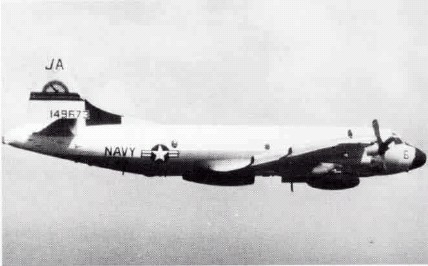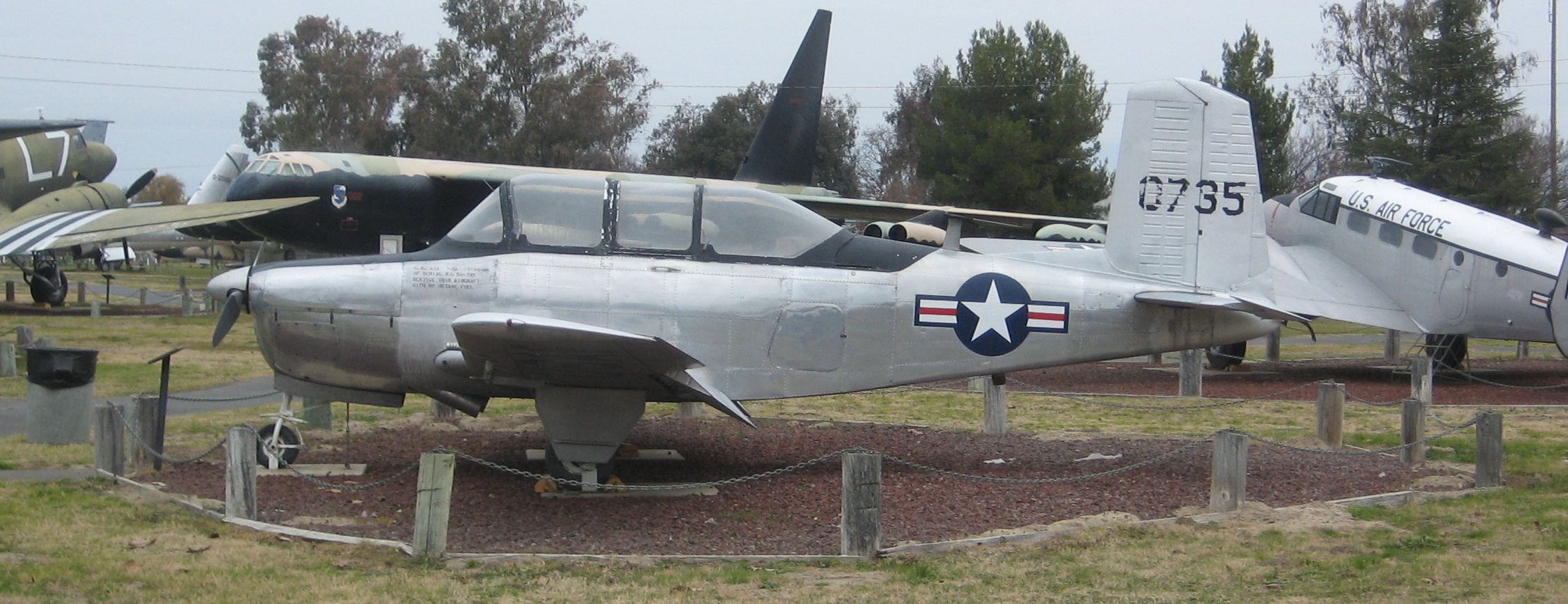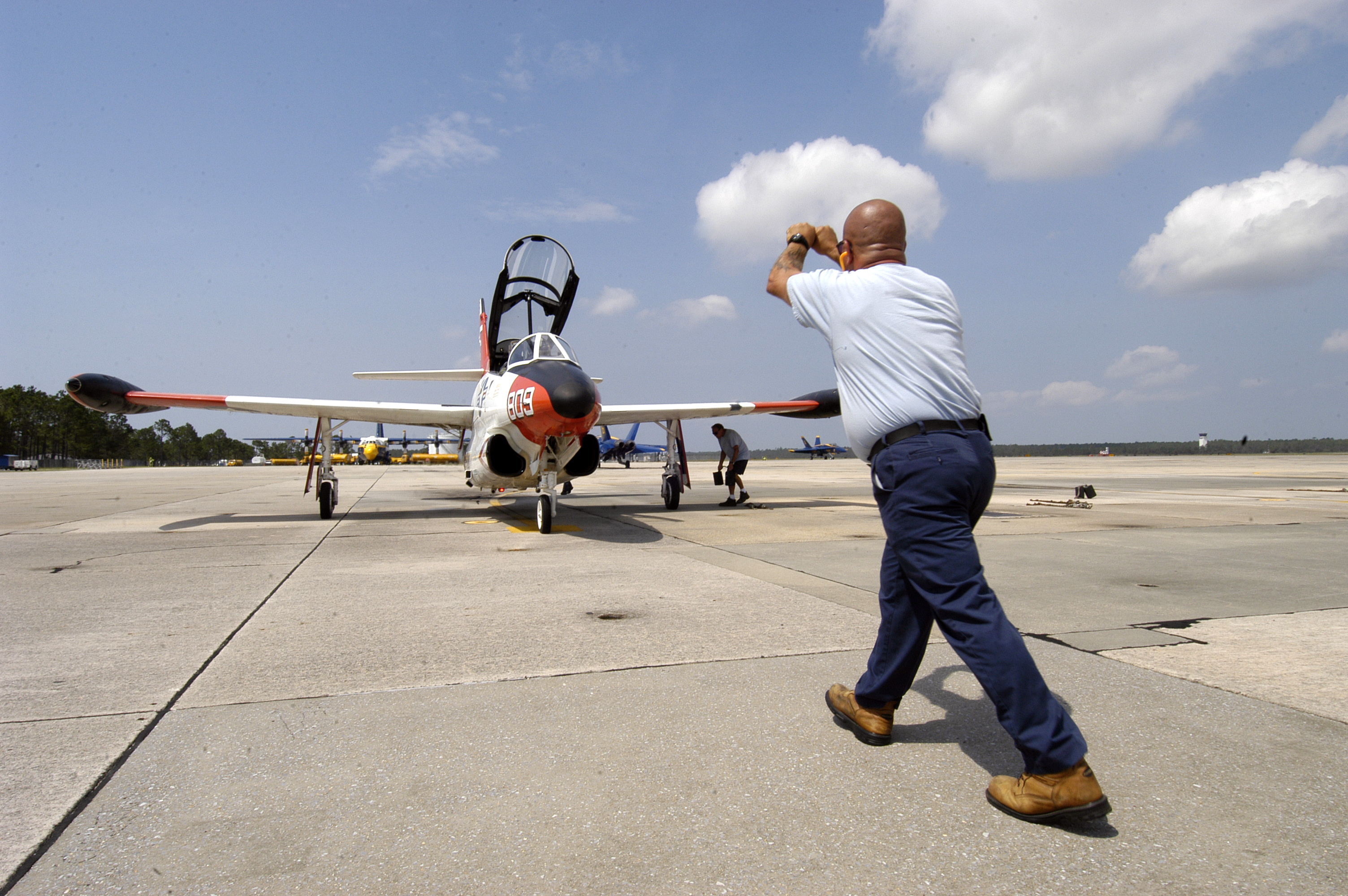|
VT-4 (United States)
VT-4 Training Squadron 4 is a training squadron of the United States Navy. Initially established as Basic Training Group NINE (BTG-9) in the 1950s, the squadron was redesignated as Training Squadron FOUR (VT-4) on May 1, 1960 and based at Naval Air Station Pensacola, Florida. General information *Advanced training for USN Naval Flight Officers (NFO) destined for E-2 Hawkeye, E-6 Mercury, EP-3 Aries, and P-8 Poseidon aircraft. *The squadron's radio callsign is ''Buck''. History Its original mission was providing flight instruction for US Navy and US Marine Corps Student Naval Aviators in the basic jet training syllabus utilizing the T-2A version of the T-2 Buckeye aircraft. In 1965, Training Squadron FOUR transitioned to the T-2B aircraft and its mission was modified to become the Naval Air Training Command's sole site for providing student pilots with basic jet flight instruction in aerial gunnery and carrier qualification. In 1971, Training Squadron FOUR transitioned to the T-2 ... [...More Info...] [...Related Items...] OR: [Wikipedia] [Google] [Baidu] |
NAS Pensacola
Naval Air Station Pensacola or NAS Pensacola (formerly NAS/KNAS until changed circa 1970 to allow Nassau International Airport, now Lynden Pindling International Airport, to have IATA code NAS), "The Cradle of Naval Aviation", is a United States Navy base located next to Warrington, Florida, a community southwest of the Pensacola city limits. It is best known as the initial primary training base for all U.S. Navy, Marine Corps and Coast Guard officers pursuing designation as naval aviators and naval flight officers, the advanced training base for most naval flight officers, and as the home base for the United States Navy Flight Demonstration Squadron, the precision-flying team known as the Blue Angels. Because of contamination by heavy metals and other hazardous materials during its history, it is designated as a Superfund site needing environmental cleanup. The air station also hosts the Naval Education and Training Command (NETC) and the Naval Aerospace Medical Institute (N ... [...More Info...] [...Related Items...] OR: [Wikipedia] [Google] [Baidu] |
EP-3 Aries
The Lockheed EP-3 is an electronic signals reconnaissance variant of the P-3 Orion, operated by the United States Navy. Development A total of 12 P-3C aircraft were converted to replace older versions of the aircraft, which had been converted in the late 1960s and early 1970s. The aircraft is known by the acronym ARIES, or "Airborne Reconnaissance Integrated Electronic System". and has Signals intelligence (SIGINT) capabilities. SIGINT is the interception of signals, whether communications between people (communications intelligence—abbreviated to COMINT) or from electronic signals not directly used in communication (electronic intelligence—abbreviated to ELINT). The EP-3E generally has a crew of 24, including linguists, cryptographers and technicians. The squadrons that flew the EP-3E also flew the Lockheed EC-121 Warning Star from 1962 to 1974 and the Douglas EA-3B Skywarrior from 1960 to 1991. There are 11 EP-3Es in the Navy's inventory, the last of which was deliv ... [...More Info...] [...Related Items...] OR: [Wikipedia] [Google] [Baidu] |
Military Units And Formations In Florida
A military, also known collectively as armed forces, is a heavily armed, highly organized force primarily intended for warfare. It is typically authorized and maintained by a sovereign state, with its members identifiable by their distinct military uniform. It may consist of one or more military branches such as an army, navy, air force, space force, marines, or coast guard. The main task of the military is usually defined as defence of the state and its interests against external armed threats. In broad usage, the terms ''armed forces'' and ''military'' are often treated as synonymous, although in technical usage a distinction is sometimes made in which a country's armed forces may include both its military and other paramilitary forces. There are various forms of irregular military forces, not belonging to a recognized state; though they share many attributes with regular military forces, they are less often referred to as simply ''military''. A nation's military may f ... [...More Info...] [...Related Items...] OR: [Wikipedia] [Google] [Baidu] |
List Of Inactive United States Navy Aircraft Squadrons
There are hundreds of US Navy aircraft squadrons which are not currently active dating back to before World War II (the U.S. Navy operated aircraft prior to World War I, but it did not organize them in squadrons until after that war). To be more accurate: there are hundreds of former U.S. Navy aircraft squadrons which have been disestablished and no longer exist and there are approximately 40 or so U.S. Navy aircraft squadrons which have been deactivated and which currently exist only "on paper" in an inactive status. These disestablished and/or deactivated squadrons are sometimes incorrectly referred to as "decommissioned" squadrons, but proper usage prior to 1998, was that squadrons were "established" and "disestablished" and after 1998, squadrons are "established", "deactivated" and sometimes "reactivated". It has never been correct to refer to U.S. Navy aircraft squadrons as being "commissioned" and "decommissioned", ships are commissioned and decommissioned, U.S. Navy aircr ... [...More Info...] [...Related Items...] OR: [Wikipedia] [Google] [Baidu] |
List Of United States Navy Aircraft Squadrons
This is a list of active United States Navy aircraft squadrons. ''Deactivated'' or ''disestablished'' squadrons are listed in the List of inactive United States Navy aircraft squadrons. Navy aircraft squadron (aviation), squadrons are composed of several aircraft (from as few as about four to as many as about a dozen), the officers who fly them, the officers and sailors who maintain them and administrative support officers and sailors. Some of the units listed in this article are not technically "squadrons", but they all operate U.S. Navy aircraft in some capacity. Squadrons and their history are listed in the ''Dictionary of American Naval Aviation Squadrons'' (DANAS). Squadron organization Active duty squadrons are typically Time commanded by a Commander (United States), commander. Second in command is the executive officer (XO), also a commander. The XO typically assumes command of the squadron after approximately 15 months. There are typically four functional departments – ... [...More Info...] [...Related Items...] OR: [Wikipedia] [Google] [Baidu] |
History Of The United States Navy
The history of the United States Navy divides into two major periods: the "Old Navy", a small but respected force of sailing ships that was notable for innovation in the use of ironclads during the American Civil War, and the "New Navy" the result of a modernization effort that began in the 1880s and made it the largest in the world by 1943. The United States Navy claims October 13, 1775 as the date of its official establishment, when the Second Continental Congress passed a resolution creating the Continental Navy. With the end of the American Revolutionary War, the Continental Navy was disbanded. Under the Presidency of John Adams, merchant shipping came under threat while in the Mediterranean by Barbary pirates from four North African States. This led to the Naval Act of 1794, which created a permanent standing U.S. Navy. The original six frigates were authorized as part of the Act. Over the next 20 years, the Navy fought the French Republic Navy in the Quasi-War (1798� ... [...More Info...] [...Related Items...] OR: [Wikipedia] [Google] [Baidu] |
P-3 Orion
The Lockheed P-3 Orion is a four-engined, turboprop anti-submarine and maritime surveillance aircraft developed for the United States Navy and introduced in the 1960s. Lockheed based it on the L-188 Electra commercial airliner. The aircraft is easily distinguished from the Electra by its distinctive tail stinger or "MAD" boom, used for the (MAD) of submarines. Over the years, the aircraft has seen numerous design developments, most notably in its electronics packages. Nume ... [...More Info...] [...Related Items...] OR: [Wikipedia] [Google] [Baidu] |
T-34 Mentor
The Beechcraft T-34 Mentor is an American propeller-driven, single-engined, military trainer aircraft derived from the Beechcraft Model 35 Bonanza. The earlier versions of the T-34, dating from around the late 1940s to the 1950s, were piston-engined. These were eventually succeeded by the upgraded T-34C Turbo-Mentor, powered by a turboprop engine. The T-34 remains in service more than seven decades after it was first designed. Design and development The T-34 was the brainchild of Walter Beech, who developed it as the Beechcraft Model 45 private venture at a time when there was no defense budget for a new trainer model. Beech hoped to sell it as an economical alternative to the North American T-6/SNJ Texan, then in use by all services of the U.S. military. Three initial design concepts were developed for the Model 45, including one with the Bonanza's signature V-tail, but the final design that emerged in 1948 incorporated conventional tail control surfaces for the benefit ... [...More Info...] [...Related Items...] OR: [Wikipedia] [Google] [Baidu] |
C-2 Greyhound
The Grumman C-2 Greyhound is a twin-engine, high-wing cargo aircraft designed to carry supplies, mail, and passengers to and from List of United States Navy aircraft carriers, aircraft carriers of the United States Navy. Its primary mission is carrier onboard delivery (COD). The aircraft provides critical logistics support to carrier strike groups. The aircraft is mainly used to transport high-priority cargo such as jet engines and special stores, mail, and passengers between carriers and shore bases. Prototype C-2s first flew in 1964, and production followed the next year. The initial Greyhound aircraft were overhauled in 1973. In 1984, more C-2As were ordered under designation Reprocured C-2A or C-2A(R). In 2010, all C-2A(R) aircraft received updated propellers (from four to eight blades) and navigational updates (glass cockpit). The U.S. Navy is to start to replace the remaining 27 C-2As with 38 Bell Boeing V-22 Osprey#Operational history#U.S Navy, CMV-22Bs in 2020 with full ... [...More Info...] [...Related Items...] OR: [Wikipedia] [Google] [Baidu] |
NA T-2C 159172 VT-4 Pensacola 04
NA, N.A., Na, nA or n/a may refer to: Chemistry and physics * Sodium, symbol Na, a chemical element * Avogadro constant (''N''A) * Nucleophilic addition, a type of reaction in organic chemistry * Numerical aperture, a number that characterizes a range of angles in an optical system * nA, the symbol for nanoampere * Naturally aspirated engine Biology and medicine * Na (tree) or ''Mesua ferrea'', a species of tree native to Sri Lanka * Neuroacanthocytosis, a neurological condition * ''Nomina Anatomica'', a former international standard for human anatomical nomenclature * Noradrenaline, a hormone * Nucleic acid analogue, compounds analogous to naturally occurring RNA and DNA Places Current * Namibia (ISO country code) * Naples (car number plate code: NA), Italy * North America, a continent * North Africa, a subcontinent Historical * Netherlands Antilles (former international vehicle registration code: NA) * Na (Chinese state), a small state of the Chinese Zhou dynasty from the 11t ... [...More Info...] [...Related Items...] OR: [Wikipedia] [Google] [Baidu] |
T-2 Buckeye
The North American T-2 Buckeye was the United States Navy's intermediate training aircraft, intended to introduce U.S. Navy and U.S. Marine Corps student naval aviators and student naval flight officers to jets. It entered service in 1959, beginning the replacement process of the Lockheed T2V SeaStar, and was itself replaced by the McDonnell Douglas T-45 Goshawk in 2008. Design and development In 1956, the US Navy issued a requirement for a jet-powered basic trainer to replace its T-28 piston-engined aircraft. (Primary training for the US Navy remained the responsibility of the piston-engined Beechcraft T-34 Mentor while the jet-powered Lockheed T2V SeaStar provided more advanced training). North American Aviation won the US Navy's competition for the new training aircraft in mid-1956 with its NA-241 design.''Air International'' October 1973, pp. 163–164. North American's design, designated the T2J-1 by the US Navy, was a mid-winged monoplane with trainee and instructor sitting ... [...More Info...] [...Related Items...] OR: [Wikipedia] [Google] [Baidu] |
Naval Aviator
Naval aviation is the application of military air power by navies, whether from warships that embark aircraft, or land bases. Naval aviation is typically projected to a position nearer the target by way of an aircraft carrier. Carrier-based aircraft must be sturdy enough to withstand demanding carrier operations. They must be able to launch in a short distance and be sturdy and flexible enough to come to a sudden stop on a pitching flight deck; they typically have robust folding mechanisms that allow higher numbers of them to be stored in below-decks hangars and small spaces on flight decks. These aircraft are designed for many purposes, including air-to-air combat, surface attack, submarine attack, search and rescue, matériel transport, weather observation, reconnaissance and wide area command and control duties. Naval helicopters can be used for many of the same missions as fixed-wing aircraft while operating from aircraft carriers, helicopter carriers, destroyers and f ... [...More Info...] [...Related Items...] OR: [Wikipedia] [Google] [Baidu] |








